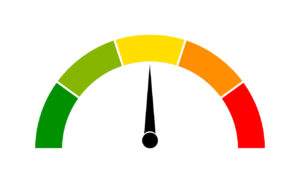Curating the week in wellness May 24–28, 2021: DE&I progress since Floyd’s death, building resilient teams, and more
The week’s essential content and fresh industry pickings for those dedicated to employee well-being.

Good morning, wellness, HR and comms pros.
We hope you enjoy this week’s collection of thought-provoking articles, savvy tips and takeaways.
As always, please get in touch with any ideas, suggestions or feedback on how we can serve you better. We are grateful for all the excellent work you do, so please keep it up!
1. One year on from George Floyd’s death, what have we learned?
Diversity, equity and inclusion efforts have come a long way in one year.
Or have they?
Expect observances, statements and events aplenty this week, as we mark one year since the death of the man who “has become a symbol in the fight for racial equality and police reform,” according to CNN.
The occasion presents an opportunity for self-reflection—and for companywide transparency. Amid the flurry of statements, solidarity and pledges of last year, how far has your company progressed on DE&I issues? Have you maintained momentum? Or have your programs stalled?
One key is to look beyond mere representation or box-ticking “diversity” toward more substantive inclusion measures.
As PR Daily writes:
“But once you’ve made that decision, and hired some great new employees—then what? “You have to move to inclusion,” says Willingham. “That is where everybody feels a sense of belonging … there’s openness, there’s a commitment there to make sure that the people that you’re employing can bring their full selves to work.”
PR Daily goes on to share ideas for meaningful DE&I goals to consider:
- Listen and learn, not just during historic demarcations, but continuously.
- Be authentic and honest about where your organization is on its journey and what needs work.
- Dig deeper. DE&I is only part of the solution. Focus also more deeply on workplace bias—implicit and explicit.
- Ensure your efforts are inspired from the very top while also being inclusive of the full fabric of the organization, including those who question your efforts.
- Be specific and actionable with metrics, tracking organizational evolution and individual accountability.
- Commit meaningful and definitive resources over the long-term.
- Treat this as a living effort that is calibrated regularly and fed so it can grow.
- Establish accountability at the board of directors level.
Another reminder: Don’t be overcome by the ubiquity or scope of DE&I problems. Focus on narrow, specific objectives your company can reasonably accomplish over time, and stay the course. Improving DE&I—much like employee well-being—is a marathon, not a sprint.
2. How to build resilient, thriving teams.
Business Insider shares guidance from Gallup that can help managers determine whether employees are “suffering, struggling or thriving,” which starts with getting employees to share about their current mindset and feelings about the future. Gallup suggests asking your workers:
“Imagine a ladder with steps numbered from zero at the bottom to 10 at the top. The top of the ladder represents the best possible life for you and the bottom of the ladder represents the worst possible life for you:
- On which step of the ladder would you say you personally feel you stand at this time? (0-10)
- On which step do you think you will stand about five years from now? (0-10)”
Employers can help nudge employees toward “thriving” by helping to cultivate healthier habits. “The key is to identify your employees’ unique strengths and aim them toward high well-being,” and:
“Managers should have conversations with their employees about well-being, but only when you have built a foundation of trust. Well-being conversations without that personal connection can be a minefield. This is why starting well-being discussions with an employee’s strengths is so effective. These discussions:
- Focus on the individual’s positive contributions.
- Don’t include awkward criticism that puts them on the defense
- Identify what makes them unique.
- Establish a common language for strengths-based development that contributes to net thriving.
“When you can identify the specific strengths of an employee, you will know what that employee finds interesting, engaging, important, and valuable. This empowers you to have meaningful conversations and match well-being activities with that individual’s interests. Combining strengths and well-being at work is potentially the most transformational treatment yet in the urgent pursuit of resiliency, mental health and ultimately, net thriving.”
3. Harmonizing with ESG and CSR objectives.
Savvy wellness and HR pros know their goals should align with and complement larger corporate objectives. Increasingly, these bigger targets encompass Environmental, Social and Corporate Governance (ESG) and Corporate Social Responsibility (CSR) initiatives.
But where might you start? And how should you be reporting on progress? Looking to others for inspiration is worth considering.
For example, FedEx just released its 2021 ESG Report. The company touts its goal of becoming carbon-neutral by 2040 and cites environmental achievements such as:
- 30% decrease in aviation carbon emissions intensity.
- 50% improvement in fuel efficiency of FedEx Express vehicles.
- 30% of jet fuels from alternative sources.
Meanwhile, FedEx cites “social” and “governance” wins from the past year:
- $15m+ provided in tuition assistance to 9,961 employees to further their education.
- 25% of FedEx management employees globally are women.
- 38.4% of FedEx management employees in the U.S. are minorities.
- $5m+ contributed to nonprofits working on DE&I in business and the community.
- In FY2020, we procured $13.3 billion in goods and services from diverse and small-business suppliers in the U.S.
- The FedEx Corporate Integrity and Compliance department—led by our Chief Compliance Officer—provides best practices, tools, guidance, communications, and training to team members across the enterprise.
Plenty of companies have recently published helpful, instructive CSR reports, too, including Goodyear and Scotts Miracle-Gro. However you go about reporting your progress, be sure your goals dovetail with larger corporate objectives.
Workiva offers more tips on reporting ESG data here.
4. Getting strategic about ‘social justice.’
Porter Novelli’s 2021 Business and Social Justice Study sheds light on how companies can proceed on commitments made in 2020—and serious pitfalls to avoid. Its key findings include:
- Silence has consequences: Six-in-10 (59%) Americans say it is no longer acceptable for companies to be silent on social justice issues and a further 49% say they assume companies that remain quiet on social justice issues don’t care.
- Speaking out is welcome, but it comes with accountability: Two-thirds (66%) say they appreciate when companies they haven’t heard from before join the dialogue, but 60 percent will hold a company accountable when it makes a statement of support around specific social justice issues.
- Corporate communications can normalize topics and drive change: Six-in-10 (60%) are optimistic that as companies begin to address social justice issues, we will see real change – and 62% believe companies can help normalize social justice conversations through their marketing and communications.
- Employees expect more from employers: More than half (58%) of employees today say they hold their employer to a higher standard than other companies when it comes to addressing social justice issues and 43% say they are reconsidering their current job because their company is not doing enough to address social justice issues externally.
5. Four ways to boost employees’ financial well-being.
HR Executive offers a handful of benefits to consider, including:
- Low-interest installment loans: These help employees avoid payday loans and high-interest credit cards.
- Medical deductible financing: Especially attractive given the increasing popularity of high-deductible healthcare plans, these low-interest programs can help cover deductibles and can be repaid through payroll deductions.
- Employee purchasing programs: These give employees access to products and services through payroll deductions.
- Student loan repayment programs: With these programs, employers can contribute to help pay down loans or can help employees find ways to refinance that debt.
6. Getting your return-to-work ducks in order.
There’s a battle brewing over the future of work. And if you don’t get your remote-work policies in writing sooner than later, it could get ugly.
HR Dive, writing about the “tension” that’s emerging between employees and bosses (and workers with one another):
“While 4% of employers estimated that most employees prefer to come back full time for in-person work, 28% said they expected to require such an arrangement regardless.”
Also:
“For both employers and employees, hybrid work still appears to be the prevailing model of choice, with employers reporting that 71% of their employees prefer a hybrid model, and 55% of employers saying they will offer it. Employers are demonstrably wary of the workforce management issues presented by a split between in-person and remote workers, however, with 8% reporting they are ‘very concerned,’ 65% reporting they are ‘moderately’ or ‘somewhat’ concerned, and only 28% reporting they are not concerned.”
Regardless of which path or policies you end up settling on, make sure you’re crystal-clear with your employees regarding remote-work rules. If there’s confusion or inconsistency—or if your employees feel duped or misled—you run the risk of alienating a wide swath of staffers.
Oh, and better get that masking policy in place, too.
7. The explosion of virtual mental health care.
HR Dive finds:
- Minnesota-based nonprofit health plan Medica saw a 2,515% increase in the number of members who accessed mental healthcare through telehealth as it processed 17,000 such claims between late 2020 and early 2021, according to a May 10 announcement.
- Medica’s analysis of the claims showed anxiety, depression and trauma — including diagnoses such as post-traumatic stress disorder and acute stress disorder — were the top three conditions treated by telehealth. Individuals ages 35 to 49 used telehealth most when seeking mental healthcare, and women using the service outnumbered men.
As Mental Health Awareness Month comes to an end, make sure your mental health programs don’t fade into the background. CNBC notes how some companies are supporting weary workers:
• Paying employees to use vacation days.
• Providing on-demand resources.
• Extending mental health benefits to households.
• Ensuring resources are inclusive and reflect the needs of those most likely in need of help.
• Extra financial support.
• Creating employee connection.
• Destigmatizing mental health at work.
8. Wellness programs can boost morale.
9. To bolster social wellness, consider the ‘hub and spoke’ model.
MIT explains the concept here:
“But a significant majority of businesses — 77% — believe the lack of social contact during work hours has compromised employee wellness. As a result, many organizations believe it’s time to reinvent the working environment with a middle ground between packed offices and the isolation of working at home: the hub-and-spoke office model. This setup — in which a company operates a centralized main office (hub) with more localized satellite offices (spokes) — is a fundamental driver of workspace mobility. Offering an attractive yet accessible hybrid of both home and office work, the model increases the options and flexibility for employees by including the home as an essential spoke.”







